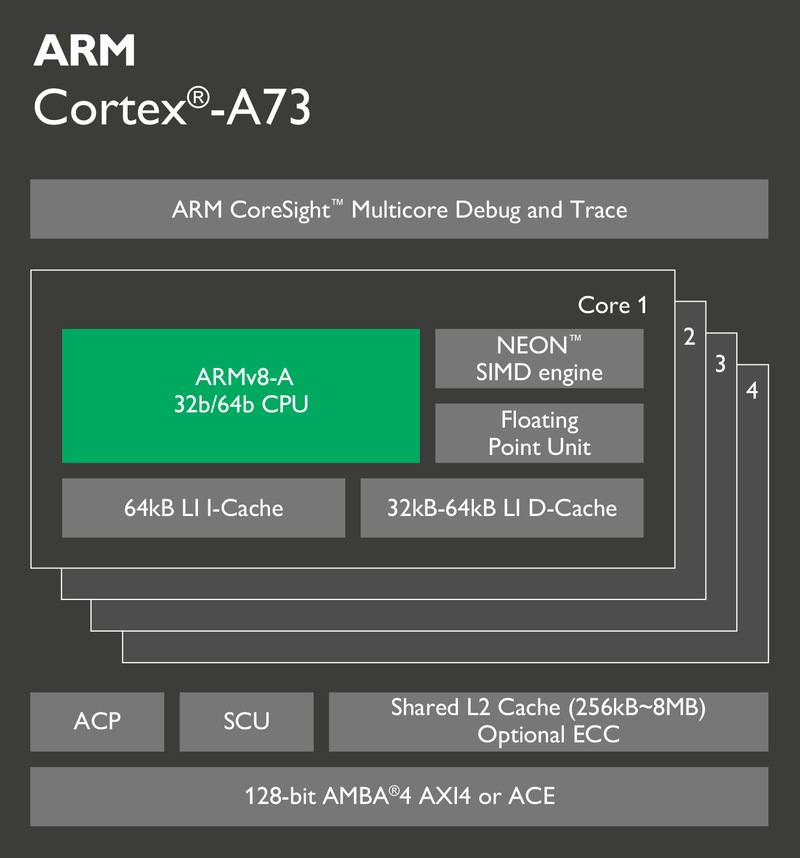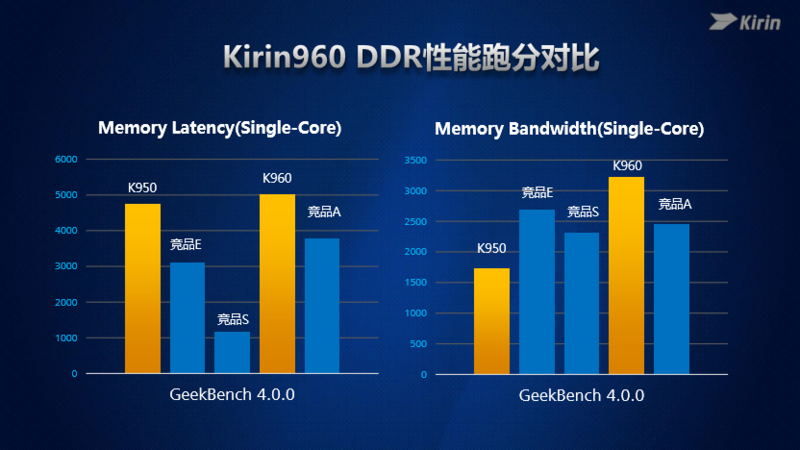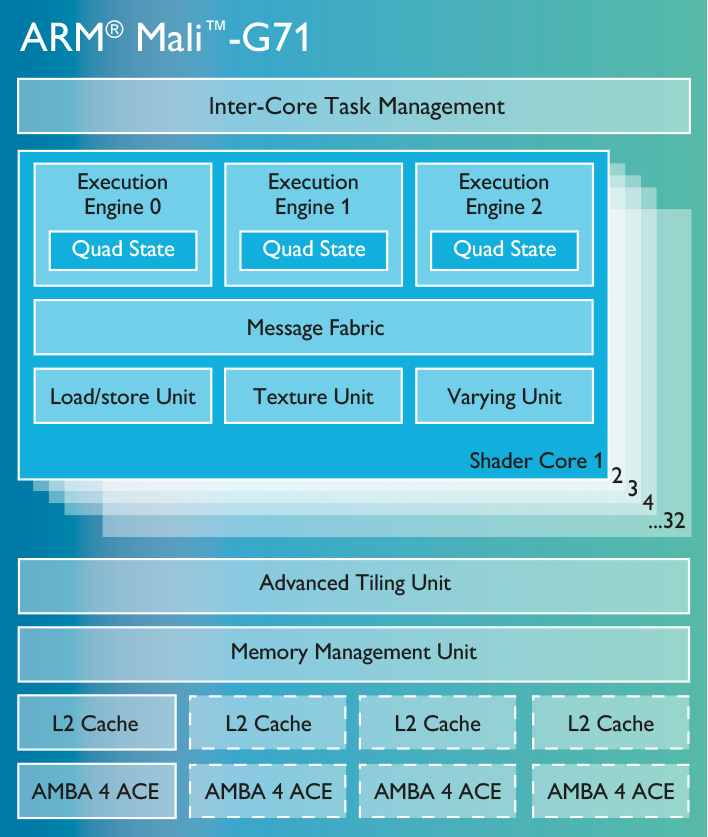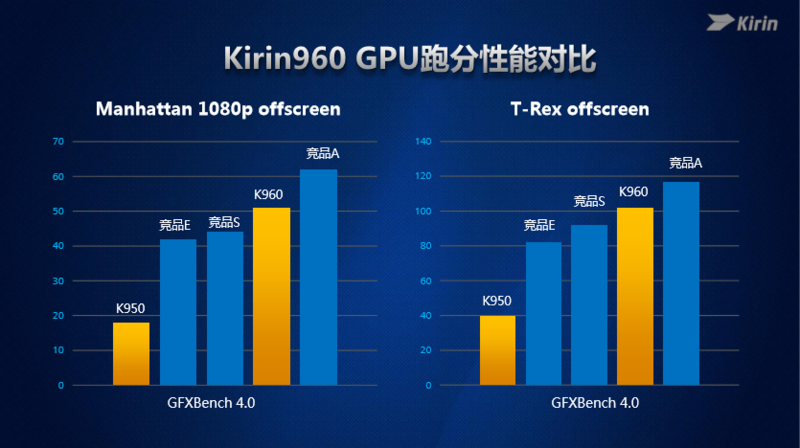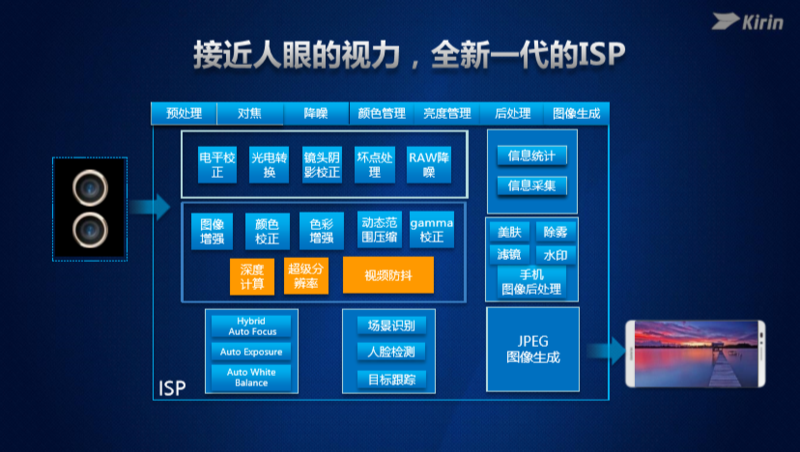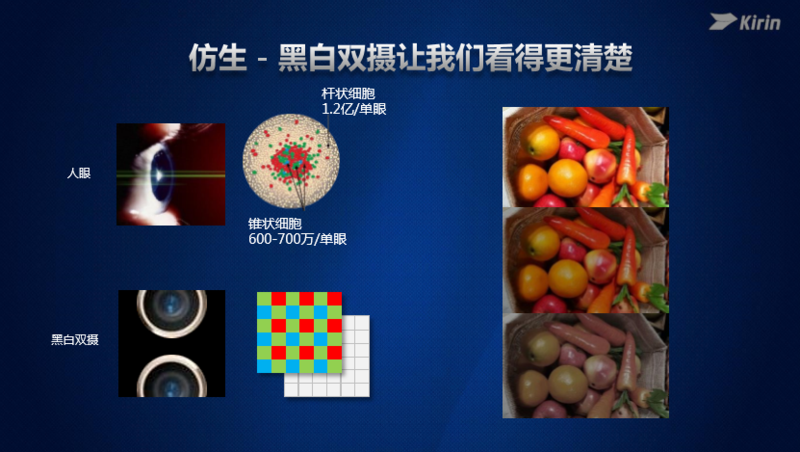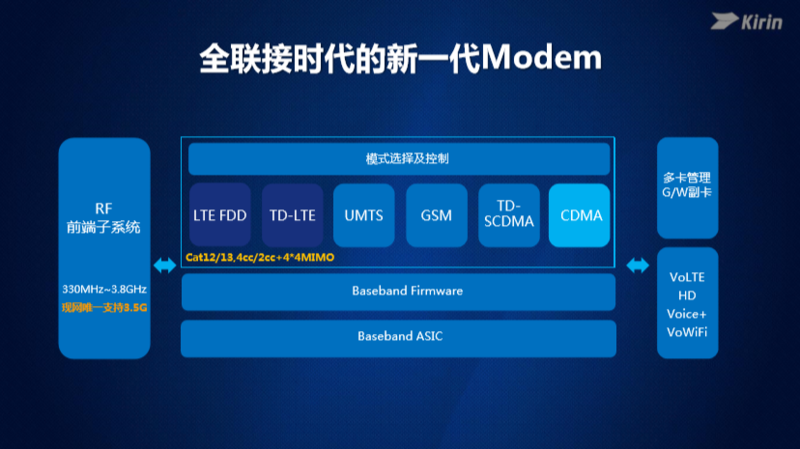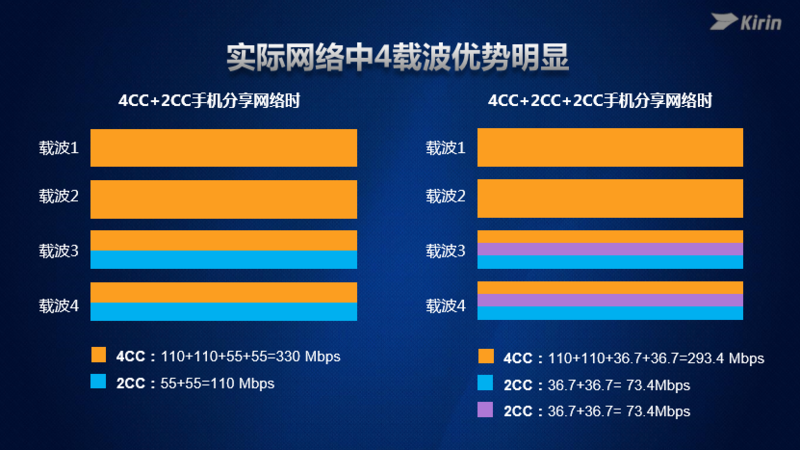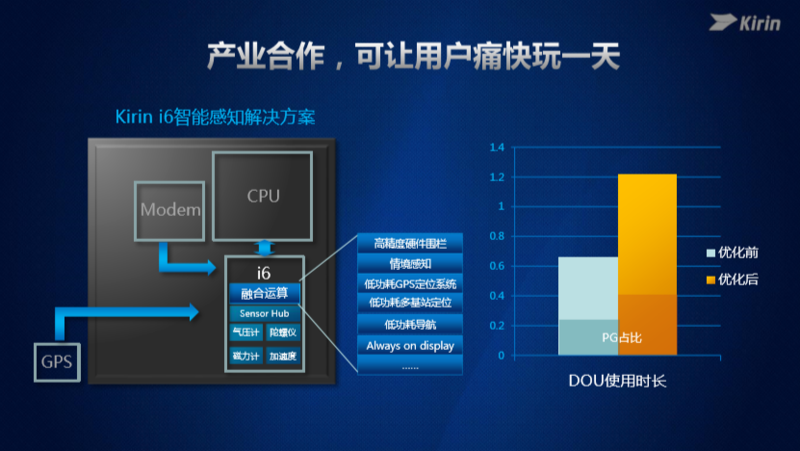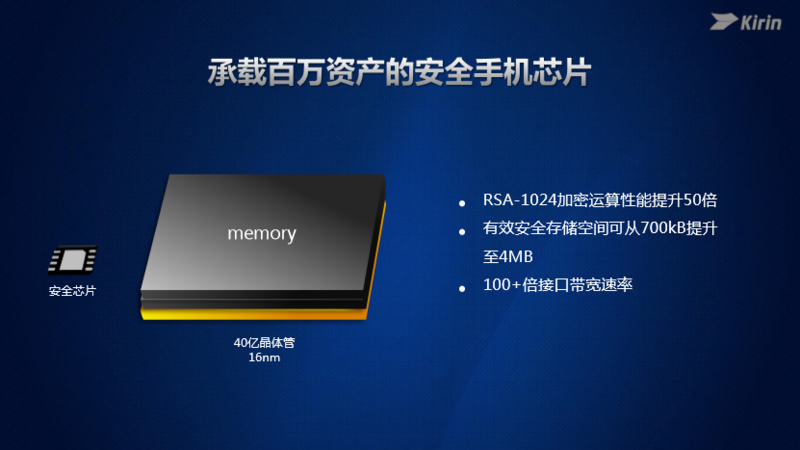IT168 Reviews As smartphones carry more and more features, the processor becomes more and more important. On October 17, Huawei held a conference in Shanghai to formally announce the latest generation of SoC: Kirin 960. As the only commercially available SoC among domestic mobile processors, the development of each Kirin chip has attracted much attention. After the conference, we also gave a brief description of the latest features of the Kirin 960. The Kirin 960 has improved in performance, camera, security, and connectivity. Our today's machine observation room interprets this domestically produced processor, which is known online as Xiaolong 820, and sees exactly what kind of product the Kirin 960 is. For a smart phone SoC, is not limited to the CPU this unit, but includes Modem, ISP, GPU, memory and other parts of the complex. In this generation of Kirin 960, through the architecture diagram (below) you can see, Kirin 960 in the CPU architecture, GPU model, Modem, ISP, memory specifications and other aspects have improved (yellow). Compared to before, the Kirin 960 gradually fills up the shortcomings that have been criticized before. It meets the industry's flagship standards for large-scale commercial processors in several key components, and has the advantage of independent research and development achievements in ISPs and security chips. . In addition, we may also notice that the Kirin 960 adopts the A73 architecture. When the industry's top processors have all adopted the self-developed microarchitecture, Huawei Unicorn still insists on following the upgrade of the ARM public architecture. What is the strength of the latest A73 architecture? We continue to look down. The new A73 architecture In the field of mobile SoC, the current flagship chips such as Snapdragon 820 and Apple A10 Fusion have all adopted the self-developed microarchitecture, and Kirin has been using the ARM public version of the architecture. The Kirin 960 uses ARM's latest A73 architecture, 16nm FinFEF+ process. We all know that more advanced architectures and more advanced processes can improve processor performance while taking into account power consumption control. In last year's Qilin 950, Huawei boldly chose the 16nm FinFEF+ process, becoming the first commercially available SoC using a 16nm process. In this year's selection, Huawei did not choose to advance 10nm, but still continues the 16nm process. In this regard, Huawei said that in the current range of commercially available mass production, 16nm still can guarantee the power consumption of the A73 architecture, and from a lateral perspective, the improvement of the architecture is more important than the process and architecture, and the current Node 10nm process volume production is not yet mature, so Kirin eventually choose 16nm. In terms of architecture, Unicorn 960 follows the ARM public architecture upgrade plan and selects the A73 architecture. In this regard, Huawei said that the industry has specialized, self-developed architecture is not the best result for Kirin at present, let alone decided that the CPU's instruction set and architecture are ARM invented, so if there is no substantial improvement, self-study and adoption The public version of the architecture is not much different. Compared to competing products, Kirin is pursuing the improvement of overall performance. In the official introduction, Cortex-A73 still uses full-size ARMv8-A architecture, up to 2.8GHz frequency, can use 10nm, 14/16nm process, and according to ARM official introduction, when A73 uses 10nm process, compared to the previous 16nm The A72 of the process has a 30% improvement in performance and is better optimized for AR/VR. The A73 is the smallest core processor in the ARMv8-A architecture, with an area of ​​0.65mm per core and continues to support the big.LITTLE architecture. In addition, A73 and A72 in the architecture are also very different, A73 uses dual-emission L / S unit, in the launch width is less than the A72 of the three launches, but because the A73 processor's 11-core core pipeline depth than the A72's 15 The depth of the core pipeline is more streamlined, so the launch width does not have a decisive influence on the performance of the A73. However, since the A73's L1 cache is increased from 48kB to 64kB, the L2 cache is increased from the maximum 2MB of the A72 to 8MB, and an independent readout device is provided for the L1 and L2 caches, making the A73 accessible to the theory. The maximum bandwidth value. Thanks to various optimizations, the A73 has been improved in terms of extreme performance compared to the A72, and it supports the UF 2.1 memory specification, which also makes the Kirin 960 more readable and writable than before. In the Kirin 960 flash read-write test, the performance of continuous read and write and random read and write is several times higher than that of the Kirin 950 using the A72. At present, the highly integrated smart phones, the interior space is almost costly, especially for the motherboard part, the extremely complex electrical structure makes the choice of mobile phone processor more than enough. The A73 is called the smallest high-end core in the current processor. Each core has an area under 0.65mm, which is 43% smaller than the area of ​​1.15mm2 on the A72. According to ARM's data, the A73 uses a 10nm FinFET process. With a 2.8GHz quad core, the core area is only 5mm2. In general, the manufacturing cost of a cell phone processor is proportional to the area size, the higher the area, the higher the cost, and the smaller processor area brings a smaller cost. In addition, from the architecture diagram, we can see that in the DIC Interrupt Control area, the CCI 500 that was released at the time of A72 is finally used. In the introduction of the Kirin 950, we have already introduced this. In fact, the biggest change in the CoreLink CCI-500 is the addition of a “Snoop Filter†so that the snoop control is no longer confined to a single cluster. Between the internal CPUs, all CPU cores are allowed to be scheduled at the same time. This reduces the workload of the processor to perform cached queries and is more efficient. I believe that everyone has heard of the so-called “one-core hardships, other onlookersâ€. It is because of the low efficiency of cooperation between clusters and clusters in the previous processor. Compared with the CCi 400 in the previous Unicorn 950, the memory connectivity is not enough, and the bandwidth bus is also limited (CCi 400 maximum support 12.8G/s, CCi 500 theory up to 25.6G/s). Therefore, in the memory loan score, Kirin 960 has nearly doubled the 950 and other competing products. When G71 meets Vulkan The Kirin 960 uses the latest generation of GPUs from ARM: Mali G71, using the Bifrost architecture. Compared with the previous midgrad architecture, Bifrost's biggest innovation is the use of the instruction set shader (Claused Shader). The official stated that G71 redesigned the execution unit and grouped the instruction set into pre-set program blocks so that the instruction group can be executed automatically without interruption. It can ensure that all external dependencies are ready before the sub-execution. The result of the temporary calculation does not need to access the register bank, which reduces the pressure on the register file and significantly reduces the power consumption. By simplifying the control logic of the execution unit, the area of ​​the GPU is also reduced. In addition, the Bifrost architecture also adopts Quad-based vectorization technology. Compared with the previous SIMD vectorization technology, which can only execute a single thread at a time, Quad vectorization technology supports up to four threads of execution, sharing control logic, and the usage rate is close to 100%. In other respects, the Mali G71 clocked at 850MHz, and given the official results, based on the 16nm process, Mali G71 has a fill rate of 27.2Gpix/s pixels and a triangle fill rate of 850Mtri/s (based on 32 cores), compared to the T880. The pixel fill rate is doubled, but the triangle generation rate is only 1/2 of the previous one. For the control of power consumption and chip size, the Kirin 960 uses the Mali G71 MP8 (of course not 32 cores). And show us the unicorn 960 run points test performance. In the 1080P off-screen test in Manhattan, the Unicorn 960 score even more than doubled. In addition, the Mali G71 supports the Vulkan interface standard while supporting OpenGL and other APIs. Most of the 3D games have been interacting through the OpenGL standard. However, due to its birth in the 1990s, OpenGL is now quite old, and the utilization efficiency of multi-core processors on the market is low, and the efficiency of graphics processing is very high. It is relatively low and cannot completely release the GPU's strength. There is a kind of big horse-drawn car feeling. Therefore, on the Kirin 960, the first full support for the next generation graphics API specification: Vulkan. Compared to OpenGL, Vulkan improves multi-threaded performance, rendering performance faster, get rid of the OpenGL rely on CPU computing methods, so that without copying data between the GPU and CPU in advance, the same memory under the same read and write, give full play to the multi-core processor Parallel computing capabilities. Third-generation dual camera ISP: As people's requirements for photographing mobile phones become higher and higher, the status of post-calculation of graphic data is almost even comparable to the quality of the camera itself. Because for today's smart phones, the camera lens module and the thickness of the fuselage contradicts the destiny on the picture quality can not be compared with the SLR, more is to make up for the hardware inherent gap algorithm, Huawei can do is independent research and development ISP . Therefore, Unicorn 960 uses Huawei's proprietary PrimISP 2.0 and is built into the SoC. Built-in high-definition HD hardware depth graphics processor, super-resolution technology, support for 4K hardware video stabilization. Especially in the dual camera upgrade to the third generation of dual camera technology, simulation of human eye depth perception 3D focus, support black and white dual camera real-time fusion processing, can capture more details, in the case of low light can reduce noise. Compared to previous generation PrimISP, 2.0 has added support for image depth calculation, super resolution, and video stabilization. In the dual-camera that Huawei has been insisting on, the Kirin 960 mimics the biological characteristics of the human eye and brings the third-generation dual-camera technology. In the human eye, it is mainly composed of two types of cells: rod-shaped cells and cone-shaped cells. The cone-shaped cells distinguish the color of the object, and the rod-shaped cells bring about the details of the object. There are about 120 million rod cells and 6-7 million cone cells in one eye. Therefore, in the process of people's perception, the improvement of the details of the object is more sensitive than the improvement of the color. Therefore, Huawei has always insisted on the "black and white + color" route in the dual camera technology, which also has the same direction as Qualcomm's so-called "Clear Sight". But the difference is that Clear Sight is based on dual ISP (black and white + color) image fusion. In this regard, Kirin and Qualcomm still have some gaps. Industry-leading Modem Communications has always been Huawei's most proud of its competitiveness, but the unexpectedly high unicorn on the Kirin 950 only supports CAT6 specifications. The competing products earlier this year also achieved CAT12 specifications, and the CDMA external baseband has also been criticized. . Therefore, a new self-developed full-mode Modem was integrated on the Unicorn 960, finally achieving a breakthrough in CDMA patents. The Unicorn 960 fully supports the six most commonly used GSM/UMTS/CDMA/TD-SCDMA/TD-LTE/FDD-LTE currently used. In the 330MHz-3.8GHz full-range mode, the Unicorn 960 also became the first chip in the Unicorn series to support the entire network. In terms of dual-card dual-standby, the Unicorn 960 supports dual-card combinations under various network standards such as 4G+2G, 4G+3G, and 4G+CDMA, which can also be supported in cases where some countries have already cancelled 2G networks. In terms of network connectivity, the Unicorn 960 supports 4CA or 2CA+44 MIMO, peak download speeds of up to 600Mbps, and upgrades communication specifications to Cat12/Cat13, bringing new VoLTE voice technology to Yueyin 2.0, including: HD Voice, VoWifi (WeChat voice calls), the spectrum range is expanded by 100%, and the sampling rate is increased by 100%. The Kirin 960's intelligent voice enhancement technology, SPLC, can dynamically and intelligently compensate the user's voice, remove 50% of the noise and speech interruptions, reduce the sensation of rattle, and improve the voice call experience. In terms of theoretical performance, it is tied to the top level in the industry. Smarter coprocessors: From the whole design concept, it can be seen that the Kirin 960 focuses on performance and power consumption. However, for the current smart phone, the use of co-processors is less effective in the case of battery technology that has never been broken. To do more things, the power consumption problem of the CPU is a strategy to save the country by curve. Kirin experienced i3 and i5 applications before. On the Unicorn 960, i6 has been further optimized to give the i6 coprocessor more tasks. Further reduce the CPU's burden. On the Unicorn 960, the i6 shares resources with the A73 and A53, and independently takes over lightweight tasks when the phone is in sleep, but consumes only 1% of power consumption. Compared with i5, in a typical PDR service, power consumption is reduced by 75%, and pedometer service is reduced by 40%. And i6's fusion operations include high-precision fences, situational awareness, low-power GPS positioning, low-power multi-base station positioning, low-power navigation, and AOD (On Screen On) functions. Such changes also make it possible to run some LBS-based AR class applications (Pokeman Go) in the future to reduce power consumption by 70%. Strong security: As smart phones carry more and more functions, both information security and financial security have become more and more important. Therefore, the Central Bank and UnionPay have also put forward regulatory requirements for the security solutions of mobile terminal finance: The payment requires single-factor authentication (static password or biometric identification), 10,000 yuan requires two-factor (static password and fingerprint identification), 50,000-million payment requires more than three factors (digital certificate or electronic signature, static password, Biometrics), so some current mainstream mobile payments have a certain limit. The inSE program proposed by Qilin was the first to obtain dual-chip security certifications from banks and UnionPay, and was the world's first chip to achieve financial and security. Thanks to Huawei's years of deep development in communications, Kirin 960 actively defends the pseudo base station from the bottom layer of the chip. In the 2G/3G network environment, when the mobile phone enters the range of the base station, it authenticates the base station model and refuses to communicate with the pseudo base station. Fundamentally, The risk of the pseudo base station is solved and the user's connection security is protected. And Kirin 960 integrates the security chip with the SoC. Compared with other security solutions, the inSE security solution makes the processor, security chip, and memory all fuse together, making the security chip unreplaceable and fundamentally guaranteeing the phone's Security, and Kirin 960 supports CRT-RSA, RSA, DES/3DES, AES encryption and decryption algorithm, has a high degree of security. Summary: At this communication meeting, Huawei's theme for the Kirin 960 was “Innovation rejects lost ideasâ€. In fact, the term “innovation†has been mentioned repeatedly from the beginning of 15 years. It is even more rare today that the mobile phone has been severely homogenized. With respect to the Kirin 960 product, I believe that the previous analysis has already had a general impression: Although Kirin and mature Qualcomm have some gaps in some divergent functions, the performance indicators of some key components have been catching up. The entire Kirin 960 There is no obvious part of the short board that criticizes people, and on the basis of balance, they can use their advantages of tight integration with the terminal to further improve the actual needs of users. Innovation is not something that can be done overnight. It requires patience. Kirin 960 has proved that it can stand at the height of the first echelon. We also expect that Huawei Unicorn will bring even more surprise products afterwards. Power Film Capacitors - Plastic Case Polypropylene High Voltage Capacitor,axial film capacitor,axial capacitor,SHV capacitor XIAN STATE IMPORT & EXPORT CORP. , https://www.capacitorhv.com

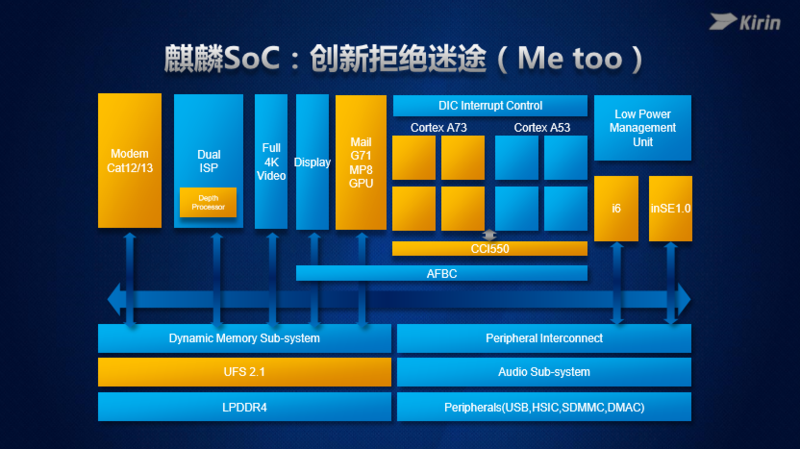
Kirin 960 architecture diagram 